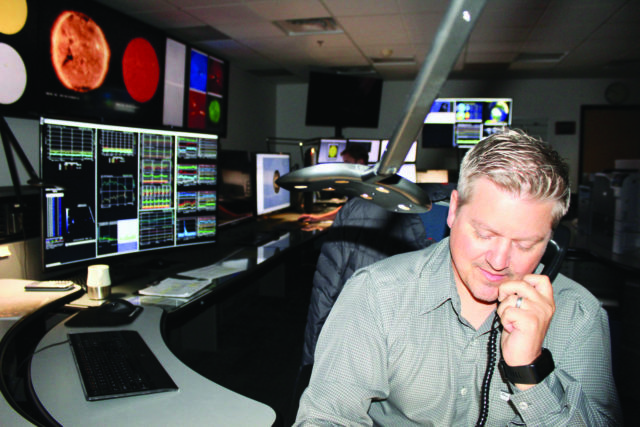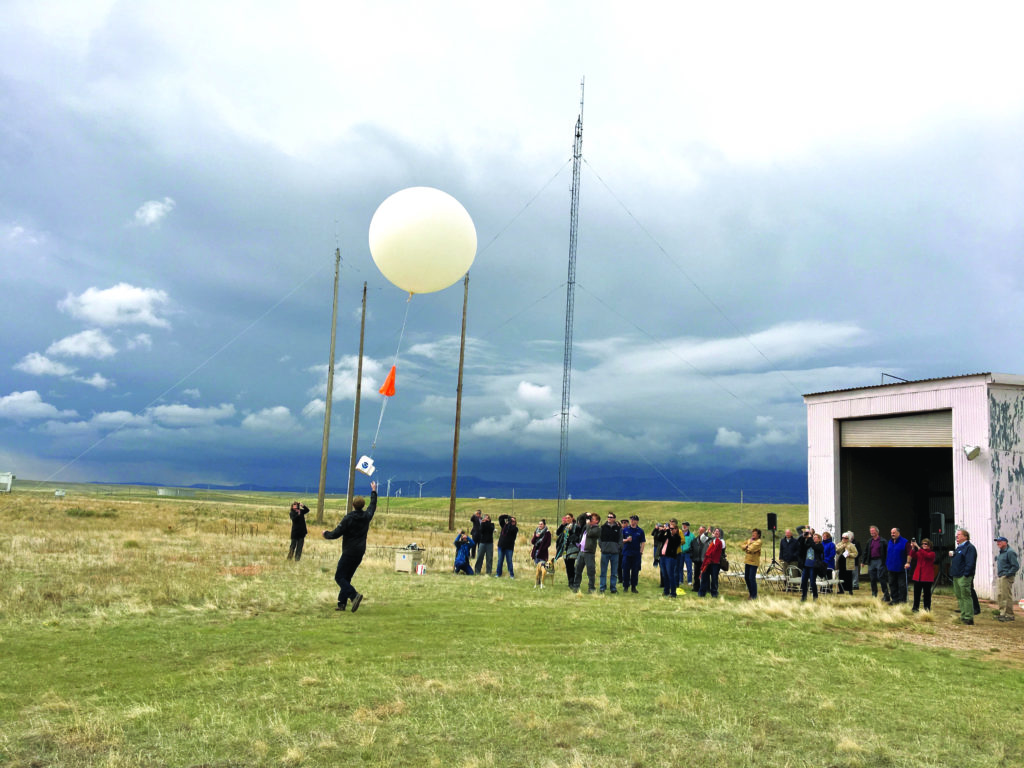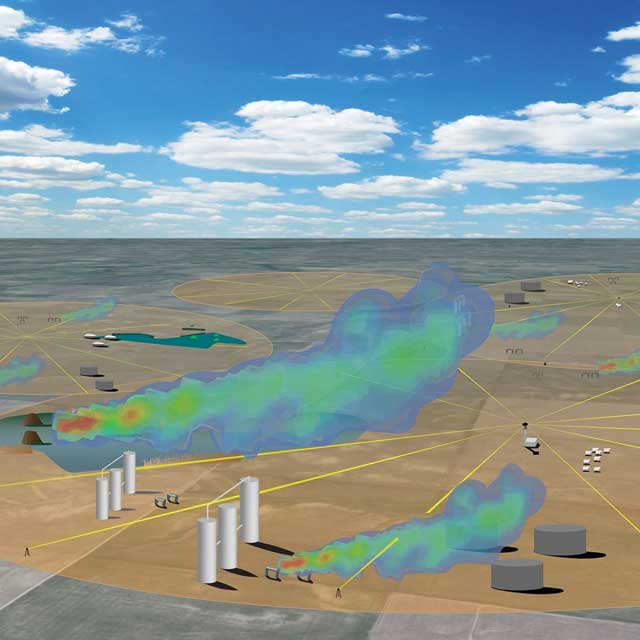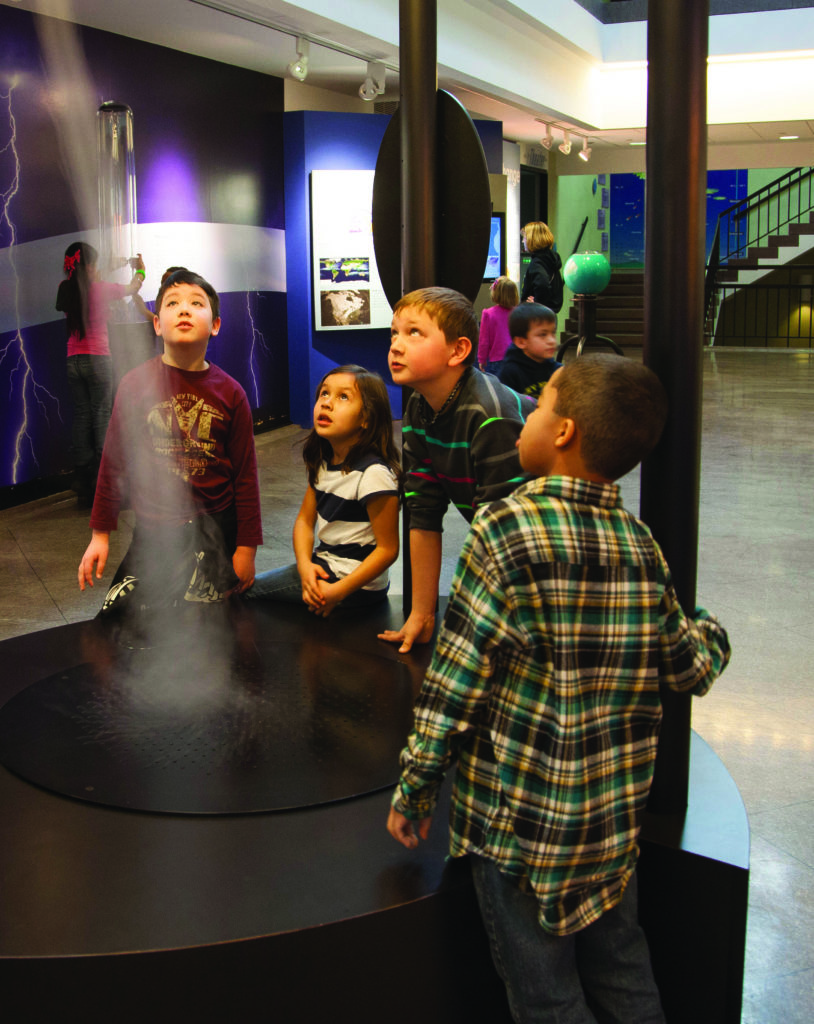
As astronauts gear up for a new space mission and climate scientists strive to save the melting ice caps, the benefits from scientific discoveries seem far from home. But that isn’t the case in Boulder County. Pull out your phone, and you’ll see the efforts from multiple local labs.
Just the weather app alone uses data collected from the National Oceanic and Atmospheric Administration (NOAA), with equipment and models developed by the National Center for Atmospheric Research (NCAR), both located along the base of the Flatirons. Even your cell phone’s clock is tied to the atomic clock housed in the National Institute for Standards and Technology (NIST), which proudly displays its timekeeper on Broadway for all to see.
For decades, Boulder has boasted a rich scientific community. NIST, NCAR and NOAA are just a handful of organizations around town — theres’ also the University of Colorado and its laboratories like the Institute of Alpine and Arctic Research (INSTAAR) and the National Snow and Ice Data Center (NSIDC), to name a few. Together, they all cast a wide net of research, disciplines, expertise and applications that affect various aspects of our everyday lives.
In 2016, federally funded research facilities in Colorado contributed $2.6 billion to the state economy, with Boulder County contributing $1.1 billion, according to a 2017 report done by the Leeds School of Business at CU. And in 2017, the U.S. Census ranked Boulder as the third most educated city in the country.

There’s a synergy that exists in Boulder, says Theo Stein, public affairs officer with NOAA. He says the diversity of institutions allows for a medley of different approaches that, together, advance scientific and academic research.
“It is a virtuous circle. It creates its own weather, if you will, its own intellectual momentum,” Stein says. “There’s a real center of gravity for this kind of research here. It creates a self-sustaining culture of scientific exploration.”
It’s hard to encapsulate the breadth and depth of research at these labs. Take NOAA as an example: Its work reaches from Boulder to explosions on the sun’s surface and how they affect Earth. The Boulder campus includes an Earth system research lab with divisions in chemical sciences, global monitoring, global systems and physical science. NOAA also houses the National Centers for Environmental Information, which aggregates weather and climatological information, and the National Weather Service, with a Denver/Boulder weather forecast office and a space weather prediction center.
“The laboratories are highly specific and highly quality-controlled in order to get rigorous data that the rest of the world’s scientific community can utilize for their own research,” Stein says. “Our greenhouse gas record is pretty much the foundation of international climate research.”
Boulder’s scientific hub is known throughout the world, making Boulder a magnet for expertise. For example, NIST houses three Nobel laureates who have won prizes in physics and quantum mechanics. Models, technology and research used from these labs span the globe.
“We’ve had reporters who tell us that when they make phone calls, it’s two area codes: 202, which is all Washington D.C. and all the policy going off around science, and 303. It’s here,” says David Hosansky with NCAR.
Several of the prominent labs in Boulder popped up in the post-war era. During the Cold War, competition between nations drove research. Labs came to Boulder for myriad reasons. Stein says officials became concerned of a potential nuclear attack on Washington D.C. wiping out the country’s vital services. So, the Department of Commerce, which is NOAA’s and NIST’s parent agency, opened a campus in Boulder in the 1950s to distribute its intellectual capital.

NIST also had other reasons that drew its operations to Boulder, says Marla Dowell, director of NIST Communications Technology Laboratory and NIST Boulder Laboratory. Boulder’s moderate population and its location created a radio-free zone, which helped with measurements and standards related to early radar work.
This lack of radio waves also made NIST an ideal location to continue to develop and improve the atomic clock, which NIST has been working on since 1948. The current iteration, which came online in 2014 is the global standard.
“The latest NIST-F2 atomic clock is so accurate that it will neither gain nor lose a second of time in about 300 million years,” Dowell says.
Measuring time is only one of NIST’s specialties. Its primary focus is to support industry, and it does so by making better devices such as developing more accurate measurements for high-power lasers to help welders, or working on virtual reality simulators for firefighters, SWAT team members and first responders.
Applied science is strong across the board at all the laboratories. NCAR is responsible for many of the climate models used today, including weather and water forecasting. Researchers there have improved weather observation collection in developing nations by creating affordable, durable 3D printed plastic equipment. Through research, NCAR and others solve real-world problems.
“We study almost anything that’s affected by the air — aircraft, road weather, how roads are affected by weather — and better forecasting those conditions and getting better information to both state departments of transportation and drivers,” Hosansky says. “So, in winter, if the State of Indiana is trying to figure out what particular stretches of road are going to be most affected by an incoming winter storm, they’ll use technology that’s been developed by NCAR. There are a lot of subtle ways that better understanding the atmosphere is useful for society.”

And with all the institutions in a central location, they can work together to help achieve a greater good. While NIST might not be delving into the underlying causes and concerns of climate change, Dowell says, it can build more accurate measurement tools that other labs can use. Dowell cites NIST’s collaboration with NOAA to improve the ability to detect methane, which will in turn lead to better findings and eventually stronger solutions to managing this greenhouse gas.
“The Boulder innovation ecosystem makes it a great location for this lab,” she says.
Boulder has a lot to be proud of, with its scientific community as one of the most prominent feathers in its hat. Because after all, science is about making the world better a better place. With dedicated researchers, labs like NCAR, NOAA and NIST help to create a better tomorrow.














